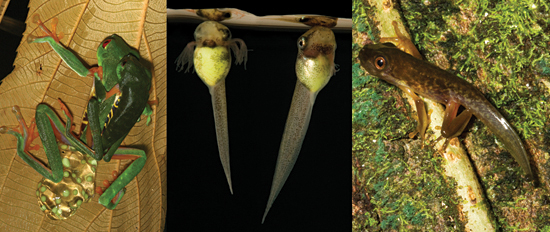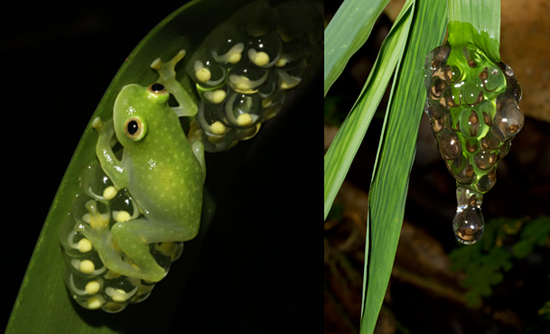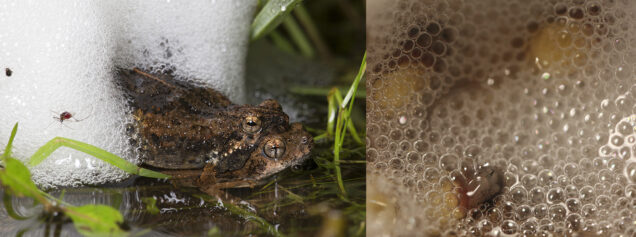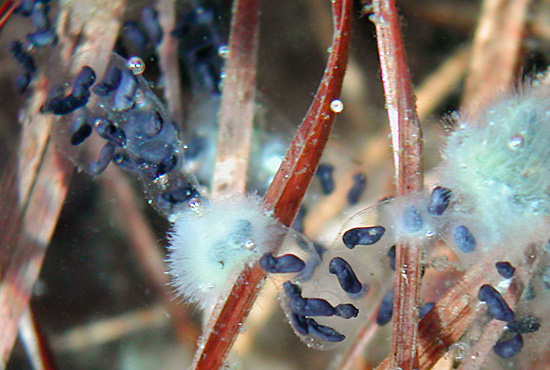The animals we study
Neotropical frogs
Most of our research focuses on Neotropical frogs that lay terrestrial eggs and have aquatic larvae, and includes work on their natural enemies at multiple life stages. These include species from four lineages that have independently evolved to lay eggs out of water.
Red-eyed treefrogs, Agalychnis callidryas, and other phyllomedusines

Warkentin has studied red-eyed treefrogs since 1991, in Costa Rica and in Panama. This is the species we know best. We are building an integrative picture of its life, including behavior, development, ecology, evolution, and physiology. Much of our effort is focused on eggs, but we have worked with all life stages. We also do comparative work with other Agalychnis species, and phyllomedusine treefrogs more broadly.
Hourglass treefrogs, Dendropsophus ebraccatus
 Reproductive mode plasticity in hourglass treefrogs (J.Touchon & KW)
Reproductive mode plasticity in hourglass treefrogs (J.Touchon & KW)
Justin Touchon, the first Warkentin lab PhD student, added hourglass treefrogs to our study organisms in 2003. Touchon discovered reproductive mode plasticity in D. ebraccatus – this species lays either aquatic or terrestrial eggs, depending on environmental context – and has gone on to study the evolution of reproductive mode in Dendropsophus more broadly. The Warkentin lab continues to study ecological developmental biology of early life stages in D. ebraccatus, including mechanisms of hatching plasticity (Kristina Cohen’s PhD).
Glassfrogs, family Centrolenidae
 H. fleishmanni egg-brooding (J. Delia); E. prosoblepon eggs alone (KW)
H. fleishmanni egg-brooding (J. Delia); E. prosoblepon eggs alone (KW)
Jesse Delia has worked with glassfrogs since 2003 and brought this clade into our study repertoire when he joined the lab in 2011. In Gamboa, Panama, we work with six species – Hyalinobatrachium fleishmanni and H. colymbiphyllum with prolonged paternal care, and Cochranella granulosa, Teratohyla pulverata, T. spinosa and Espadarana prosoblepon with brief maternal care. Jesse and collaborators have conducted comparative research on many other species in Central and South America. Javier Méndez Narváez is studying glassfrog embryo physiology and María José Salazar Nicholls is examining hatching mechanisms.
Foam-nesting frogs, Leptodactylidae

Javier Méndez Narváez has worked with leptodactylids since 2012, bringing this work to the Warkentin lab in 2016. In Gamboa, he works with aquatic foam nests of túngara frogs and terrestrial foam nests of Leptodactylis fragilis.
Temperate vernal pool frogs

In Massachusetts, we have worked on spring-breeding amphibians, including wood frogs and American toads, focusing on embryo responses to pathogenic water molds.